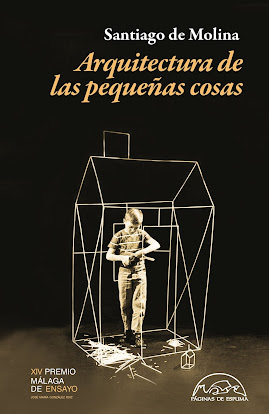El diálogo entre dos piezas deja de ser monólogo precisamente gracias a esa duplicidad. Las torres Gemelas o los apartamentos de Lake Shore Drive en Chicago de Mies Van der Rohe representan más que dos torres: son la distancia de una conversación. El hermanamiento o el problema del doble como amenaza también se da en la arquitectura. El doppelgänger, pieza fantasma que amenaza con sustituir al original, está presente en cada ampliación arquitectónica. Lo doble es perturbador porque amenaza el estamento de lo único y de lo auténtico. El problema del dos cimenta el tema de la copia.
Las columnas gemelas que sostienen un arco o las dos paredes que sustentan un techo son centinelas de la fuerza de la gravedad. Pero una y otra se vinculan más allá de su función estructural. Se vigilan. Si una se mantiene en pie, la otra no puede desfallecer.
Incluso en la planificación urbana, el dos juega un papel crucial. Las ciudades se dividen en dos lados más allá de sus ejes de crecimiento o la sociología de sus barrios: el este y el oeste se tensan, el norte y el sur separan la ciudad de los ricos y de los pobres. El dos tiene su propio encanto y significado en la arquitectura, pero no deja de ser un nido de complejidades y contradicciones. Porque, entre otras cosas, multiplica el número de problemas, y lo hace exponencialmente. Téngase en cuenta que con el dos, en lugar de resolver un tema, hay que resolver el doble, y sumado a eso, su diálogo intermedio. En fin, y todo ello sin siquiera hablar de la vida en pareja.
The dialogue between two pieces ceases to be a monologue thanks to this duplicity. The Twin Towers or the Lake Shore Drive apartments in Chicago by Mies Van der Rohe represent more than two towers: they represent the distance of a conversation. The twinning or the problem of the double as a threat also occurs in architecture. The doppelgänger, the phantom piece that threatens to replace the original, is present in every architectural extension. The double is disturbing because it threatens the status of the unique and the authentic. The problem of two cements the theme of the copy.
The twin columns that support an arch or the two walls that support a roof are sentinels of the force of gravity. But one and the other are linked beyond their structural function. They watch each other. If one stands, the other cannot falter.
Even in urban planning, two plays a crucial role. Cities are divided into two sides beyond their growth axes or the sociology of their neighborhoods: the east and the west are tense, the north and the south separate the city of the rich and the poor. Two has its own charm and meaning in architecture, but it is still a nest of complexities and contradictions. Because, among other things, it multiplies the number of problems, and it does so exponentially. Keep in mind that with two, instead of solving one issue, you have to solve double and added to that, their intermediate dialogue.In short, and all this without even talking about life as a couple.












,%20India,%20photo%20by%20H.G.%20Ponting,%20y%20Fala%20Atelier,%20Casa%20Suspendida,%20Oporto,%20imagen%20Fala%20Atelier.jpg)









































































































